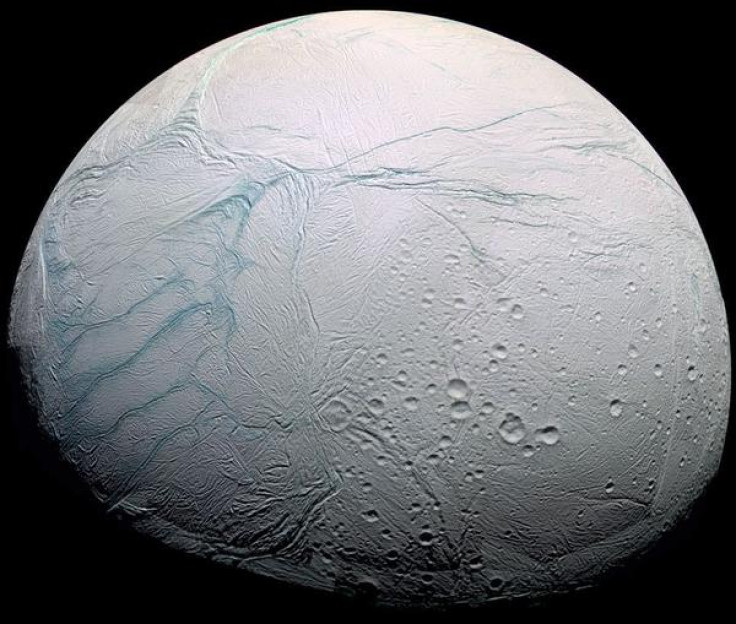Global ocean discovered beneath Enceladus' icy shell ahead of Cassini flyby

Saturn's moon Enceladus has a vast global ocean hidden beneath its icy crust, Nasa scientists have said. Data from the Cassini mission showed that that the moon's wobble as it orbits Saturn can only be accounted for if the object has a global ocean between the ice and the rocky core.
The researchers say their findings suggest the spray of water vapour, icy particles and organic molecules that come from fractures in the ice near Enceladus' south pole is fed by the huge ocean. Their findings were published in the journal Icarus and study co-author Carolyn Porco said: "This is a major step beyond what we understood about this moon before, and it demonstrates the kind of deep-dive discoveries we can make with long-lived orbiter missions to other planets."
Previously, scientists had said Enceladus likely had a lens-shaped body of water under the ice in the south pole area, but the data being sent back suggested the ocean covered the entire moon. To find out, the team looked at more than seven years' worth of images of Enceladus and mapped the positions of the moon's features to measure changes to its rotation.
Findings showed the moon has a very small, but measurable wobble, rocking back and forth as it rotates. Scientists used different models to work out how Enceladus could look on the inside, including one where the moon was frozen from the surface to the core, and another where there was a layer of liquid separating them.

Lead author Peter Thomas, from the Cassini imaging team member at Cornell University, said: "This was a hard problem that required years of observations, and calculations involving a diverse collection of disciplines, but we are confident we finally got it right."
Matthew Tiscareno, co-author of the paper, added: "If the surface and core were rigidly connected, the core would provide so much dead weight the wobble would be far smaller than we observe it to be. This proves that there must be a global layer of liquid separating the surface from the core."
Enceladus is one of the objects in our solar system scientists think could host life. Previously, it was found hydrothermal activity appeared to take place on the moon's surface. This is where seawater infiltrates and reacts with a rocky crust and emerges as a heated and mineral-laden solution, meaning there could be environments suitable for life on Enceladus.
Astrobiologist Chris McKay also recently said the moon's subsurface ocean is the best bet for mankind to find extraterrestrial life. "Enceladus is most likely to give us an answer soonest," he said.
The latest research comes as Cassini prepares to make an extremely close flyby of Enceladus, when the spacecraft will undertake its deepest ever dive through the plume of icy material being spewed out. Taking place on 28 October, Cassini will come just 30 miles (49km) from the moon's surface.
© Copyright IBTimes 2024. All rights reserved.






